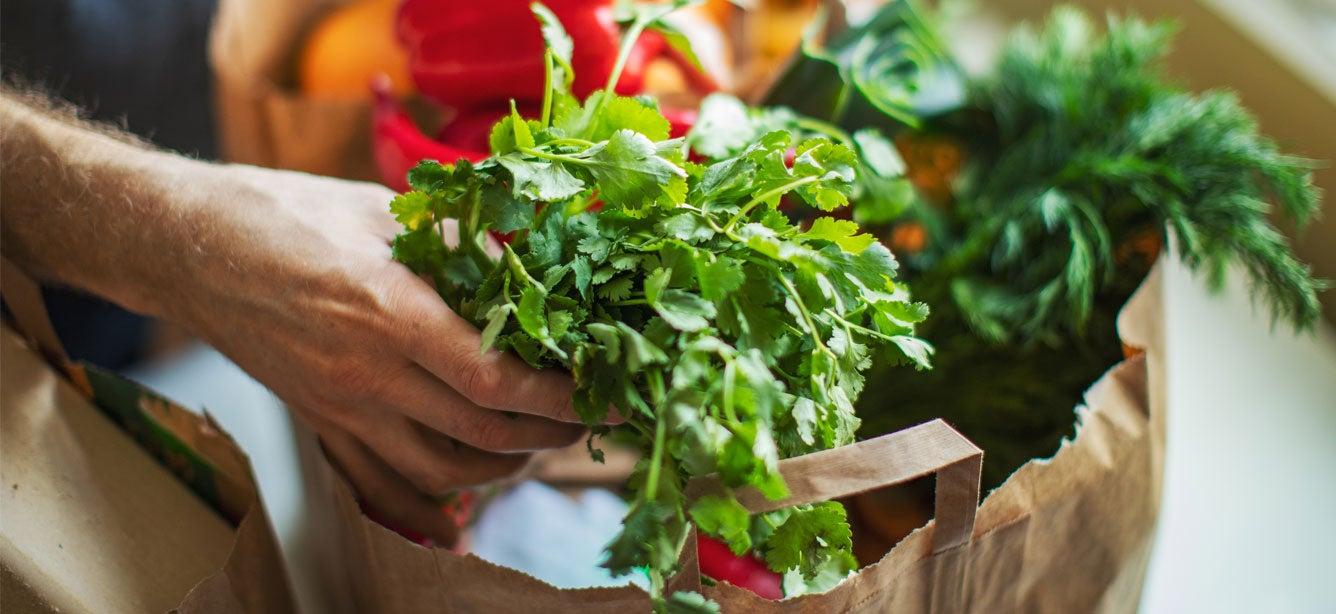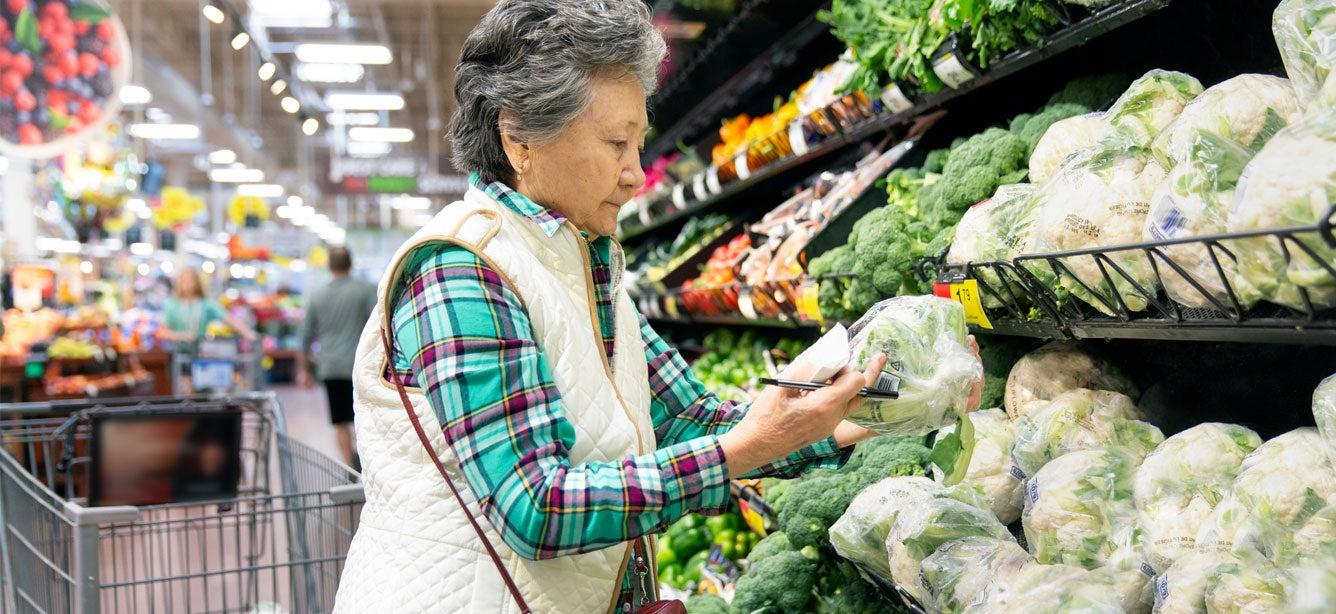An Older Adult's Guide to Using SNAP at Farmers Markets
6 min read

Whether they’re held in the summer or year-round, farmers markets are are great place to find organic, locally grown fruits and vegetables. With their often-higher prices, these markets were once unaffordable for older adults on a tight budget. But that’s all changing.
American farmers have teamed up with the U.S. Department of Agriculture (USDA) in recent years to make fresh, seasonable produce available to everyone, no matter their income level. Today, thousands of farmers markets across the nation accept Supplemental Nutrition Assistance Program (SNAP) benefits as payment for eligible items. That means if you get SNAP, you may be able to use your EBT card to buy food at a farmers market near you.
What can I buy at the farmers market with SNAP?
Overflowing baskets of plump red tomatoes… cartons of ripe, juicy berries… the aroma of warm French baguettes. A visit to the farmers market is a treat for all the senses! And nearly everything at farmers markets is available for purchase with your SNAP dollars. This includes:
- Fresh, seasonal fruits
- Locally grown vegetables
- Artisanal bread and pastries
- Farm-fresh eggs from free-range chickens and ducks
- Handcrafted cheeses
- Honey produced by local beekeepers
- Freshly squeezed juices and smoothies
- Locally roasted coffee beans
- Homemade jams, jellies, and preserves
- Grass-fed beef, free-range chicken, and heritage pork
- Freshly baked pies, tarts, and cakes
- Handmade pasta and sauces
- Herbal teas and spices sourced from local growers
- Organic herbs and salad greens for home cooking
- Specialty olive oils and vinegars
- Fermented foods like sauerkraut, kimchi, and kombucha
As with any store, you can’t use your SNAP EBT card for things like hot prepared foods, fresh flowers, artisanal soap, homemade cleaning products, pet food and treats, crafts, or alcoholic beverages.
Did you know you can by seeds and seedlings with SNAP benefits?
Many older adults don't realize their SNAP benefits can also be used to buy seeds and seedlings at participating farmers markets. Why is it a smart idea to buy seeds or starter plants with your SNAP dollars?
- It can make your SNAP benefits go further, since a single plant can grow a large amount of food for your household.
- It’s easy to grow your own food whether you have a veggie garden in your backyard, a plot in your community garden, or window boxes in your high-rise apartment.
- Home-grown produce is fresh, delicious, and loaded with nutrition.
- Growing your own food can be rewarding, and the act of gardening itself is a relaxing activity that’s good for the body, mind, and soul.
How to use EBT at a farmers market
When it comes to how they accept payment, all farmers markets do things a little differently. There are three main ways you can pay for food at farmers markets using SNAP EBT:
- Scrip system: Many markets use their own unique currency system, which requires you to purchase tokens—or "scrip"—in advance. Scrip may be in the form of a paper receipt or tangible tokens. Farmers accept scrip as payment, just like cash.
Although the scrip system may sound intimidating, it’s not as complicated as it seems. When you arrive at your local farmers market, look for an information table. Tell the person at the table that you’d like to use your SNAP EBT card to purchase food—and tell them how much you’d like to spend. The cashier will swipe your EBT card and then give you tokens to use—one token for every SNAP dollar. These tokens can’t be exchanged for cash if you purchase too many. But you can keep them to use during a future trip to the farmers market. - Direct swipe: Other farmers markets use small, hand-held terminals that accept EBT cards. These terminals work much like the terminals at store checkouts. Look for signs at individual booths that say, "We accept EBT."
- Alternative receipt system: At some markets, you shop for items first and then have the vendor/booth owner give you a receipt and set the items aside. When you're done shopping, you bring all your receipts to the information booth, pay using your SNAP EBT card, and then collect your purchases.
SNAP incentive programs at farmers markets
Some farmers markets may also participate in incentive programs designed to help SNAP recipients stretch their benefits further. This includes "matching" programs where a vendor or farm matches every dollar you spend there, up to a maximum of $10. With these programs, you may spend only $10 worth of your own SNAP dollars—but you're able to take home $20 worth of food.
For example, Massachusetts' Healthy Incentives Program (HIP) automatically gives you money back each time you use your EBT card to buy fruits and vegetables from farmers market vendors who participate in HIP. You can get up to $40, $60, or $80 extra in SNAP dollars every month.
Not every farmers market or vendor takes part in these incentive programs, but it's worth asking next time you’re there.
Why use your SNAP dollars at farmers markets?
If you’ve never visited a farmers market before, you may be wondering why they’ve become so popular in recent years. Here are a few reasons why these markets are a smart way to use your SNAP benefits:
- The freshest produce around: Farmers market fruits and vegetables are sold at the peak of growing season, when they look and taste their best. In fact, much of what you find there was harvested only hours before. This is in stark contrast to grocery-store produce that often spends days or weeks sitting on trucks or in warehouses.
- Always something new: From green zebra tomatoes and jicama to fennel and celeriac, you're likely to discover foods you don't normally encounter at traditional stores. Every trip to the farmers market is a culinary adventure.
- Vital support for local farmers: Today's small American farmers are struggling to survive. By shopping at farmers markets with your SNAP EBT card, you help keep them going while fueling the local economy.
- A great place to meet new people: Farmers markets bring together people from all over the community (and beyond). You'll find that many farmers enjoy talking about their produce—and they may even be willing to share a few growing tips with you!
How do I find farmers markets that accept EBT near me?
The USDA website provides lists of farmers markets nationwide that are authorized to accept SNAP benefits.
Do you qualify for SNAP assistance?
Many older adults who don’t think they qualify end up getting approved for SNAP. One example is John Smith, age 70. Smith told NCOA that, after paying a big tax bill, he had no savings or income other than his monthly Social Security payment. When another person at his local senior center applied for SNAP and was successful, Smith decided to apply, too.
I was surprised at how easy it was to apply for SNAP and how quickly I started receiving my $200 benefit," Smith said.
NCOA offers a free, easy-to-use online tool that can help you learn more about SNAP and find information to apply. Visit BenefitsCheckUp.org and enter your ZIP code to get started.
Sources
1. Feeding America. The State of Senior Hunger in America in 2021. April 2023. Found on the internet at https://www.feedingamerica.org/research/senior-hunger-research/senior



